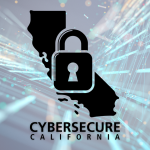Phishing is one of the most common ways hackers breach small businesses — and one of the easiest to prevent.
At Synergy Computing, we’ve seen phishing emails trick even the smartest teams. That’s because modern phishing attacks are well-crafted, well-timed, and emotionally manipulative. They’re not just riddled with typos anymore — they’re subtle, believable, and dangerous.
Here’s a visual breakdown of how phishing attacks work, why they succeed, and how you can train your team to stop them — in 5 seconds or less.
🕵️ What Is Phishing?
Phishing is when a cybercriminal pretends to be someone you trust — like your boss, a client, a vendor, or even the IRS — to trick you into:
- Clicking a malicious link
- Downloading a dangerous file
- Sharing login credentials
- Transferring money or sensitive data
The goal? To steal information, install malware, or launch a larger cyberattack.
📧 The 5-Part Anatomy of a Phishing Email
Let’s break down a typical phishing email — and what to watch for.
1. Spoofed Sender
🔍 Looks like: billing@yourvendor.com (but it’s actually billing@yourvend0r.co)
Hackers use lookalike domains or display names that seem legit. A quick glance and you’d think it’s real — but hover over the address and you’ll see the truth.
✅ Train your team: Always check the full email address — not just the display name.
2. Urgent Subject Line
🔍 Examples:
- “INVOICE DUE: ACTION REQUIRED”
- “Payroll Error – Immediate Response Needed”
- “Your Account Will Be Closed – Verify Now”
Phishing emails often use urgency to make people act fast and think less.
✅ Train your team: Pause and question anything that demands immediate action, especially involving money or logins.
3. Impersonal Greeting
🔍 Looks like:
- “Dear Customer”
- “Hello User”
- “Hi [email address]”
Legitimate vendors usually personalize their messages. Phishing emails often don’t.
✅ Train your team: Be suspicious of vague greetings — especially from senders who should know your name.
4. Suspicious Link or Button
🔍 Looks like: “Click Here to View Invoice”
But the actual link goes to something like: http://malicious.site/login-fake-page
Hackers hide malicious links behind legitimate-looking text.
✅ Train your team: Hover over links before clicking. If it looks weird, don’t touch it.
5. Unexpected Attachment
🔍 File types to avoid: .zip, .exe, .html, or even Word/Excel files with macros
These files can contain malware that installs silently once opened.
✅ Train your team: Never open attachments from unknown senders — and be cautious even with known senders if something feels off.
⏱ How to Spot a Phishing Email in 5 Seconds
Train your team to run through this 5-second mental checklist:
✅ Check the sender address — Does it match the name?
✅ Scan the subject — Is it overly urgent or emotional?
✅ Look at the greeting — Is it vague or generic?
✅ Hover over links — Does the destination look suspicious?
✅ Question attachments — Were you expecting this file?
If anything feels off — STOP. REPORT. VERIFY.
🧠 Why Phishing Works (and Keeps Working)
- People are busy and distracted
- Attackers use emotional triggers like fear, urgency, or curiosity
- Fake emails are getting harder to spot — thanks to AI tools that help craft them
But here’s the good news: awareness beats automation. Your employees can be your best defense.
👥 Turn Your Team Into a Human Firewall
Training doesn’t have to be boring or time-consuming. Start with:
- Quick phishing simulations (we can help set this up!)
- Visual examples during team meetings
- Monthly “phishing of the month” reviews
- A simple rule: “If in doubt, don’t click — report it”
🛡 Let’s Make Phishing Awareness Part of Your Cyber Plan
At Cybersecure California, we’re raising the bar for small business cybersecurity across the state. And when you’re ready for help implementing real-world solutions, we connect you with our trusted partner:
Synergy Computing.
They can:
- Run phishing simulations and reporting tools
- Set up email security filters
- Train your staff to identify threats in seconds
- Help you recover if something slips through
📅 Schedule Your Free 10-Minute Discovery Call
If phishing emails are landing in your inbox, you’re already under attack — whether you know it or not.
👉 Click here to schedule your free discovery call
Or call 805-967-8744 to talk to a local cybersecurity expert who knows how to protect California businesses.
Phishing only works if your team falls for it.
Let’s make sure they don’t.
📥 Want to Train Your Team Faster?
Download our 5-Second Phishing Email ID Checklist — a quick, printable guide to help your employees spot suspicious emails before they click.
Perfect for desks, break rooms, or your next team meeting.

